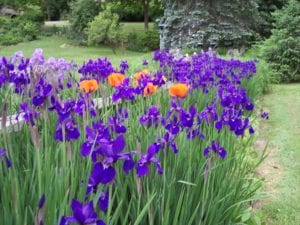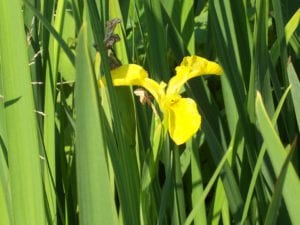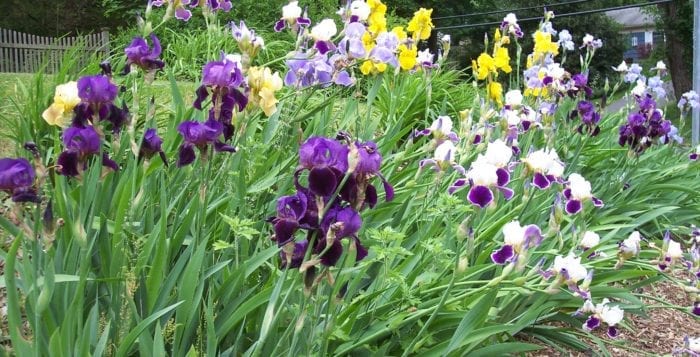By Ellen Barcel
The catalogs have started to arrive — select the bulbs you want to grow next spring but need to plant this fall. So, place your advanced order now. One of the plants you may enjoy in future gardens are irises.
There are hundreds of species of irises. The name comes from Greek, meaning rainbow, although the most commonly seen irises are in shades of purple. Irises are perennial plants growing from rhizomes that do well, in general, in U.S.D.A. zones 5 through 9 (Long Island is zone 7). Check the directions that come with each package, however, as different varieties can have different requirements.
One of the interesting features of irises is how their bloom time varies, by species, from early spring through summer and even into early fall. So, select the varieties you want based not only on color but on when you want to see flowers. Irises that bloom early will generally go dormant in the heat of summer. Iris rhizomes are usually available in nurseries for fall planting.

Once established, the plant’s rhizomes spread, resulting in a larger and larger patch of flowers each year. Seed pods form after the flowers have faded. Yes, in some cases you can grow new plants from the seeds, but sometimes the flowers are sterile. You can also remove the seed pods when they start to form in order to direct the plant’s energy into the plant itself. As with all bulbs, do not cut the greenery off after the flowers have faded. This greenery is feeding the rhizomes for next year’s flowers.
Since this plant spreads by itself, you may find that you need to divide the clump periodically. Rule of thumb is to divide spring flowering plants in the fall. As with most very showy flowering plants, Irises grow best in full sun but will tolerate light shade. A soil pH that is slightly acidic to neutral (6.8 to 7) is ideal. That means for most of us, we need to add lime to the soil. Test yours to be sure. Irises are deer resistant, but no plant is deer proof if the critters are really hungry.
If you cut some of the darker flowers, check the bouquet every day to see if the flowers are wilting. Once that happens you may see drops of a purple liquid dripping from the flowers. Yes, irises were used as a natural dye before the industrial revolution and the introduction of modern dyes.
Some of the most commonly seen irises include:
· Bearded iris (Iris × germanica) has the largest flowers with a “beard,” a hairlike structure on the petals. Most will bloom in late spring to early summer (but can vary depending on variety and weather). They usually reach a height of about 3 feet tall and are two toned. For example, ‘Pirate Ahoy’ is yellow with deep purple, ‘Stairway to Heaven’ has ruffled white and medium blue petals and ‘Ocelot’ is peach and maroon.
· Reblooming bearded iris (I. germanica) blooms in midspring and then again in late summer or early fall. They, too, come in a wide variety of color combinations.

· Dutch iris (I.× hollandica) does not have the “beard” of I. germanica and the petals tend to be narrower. The plants reach about 2 feet tall. They bloom in late spring to early summer and generally are two toned, various combinations of purple and yellow.
· Orchid iris (I. reticulate) is a dwarf plant reaching just 5 or 6 inches high. This Canadian cultivar blooms in early spring and has white and purple flowers with a touch of yellow. These are really cute little flowers.
· Yellow iris (I. pseudacorus) is native to Europe and Asia. It was used to control water pollution but has become invasive in some areas including ours, so this iris is on Suffolk County’s Do Not Sell List and is not available here and should not be propagated if you see it growing.
For more information, visit the American Iris Society website at www.irises.org.
Ellen Barcel is a freelance writer and master gardener. To reach Cornell Cooperative Extension and its Master Gardener program, call 631-727-7850.





